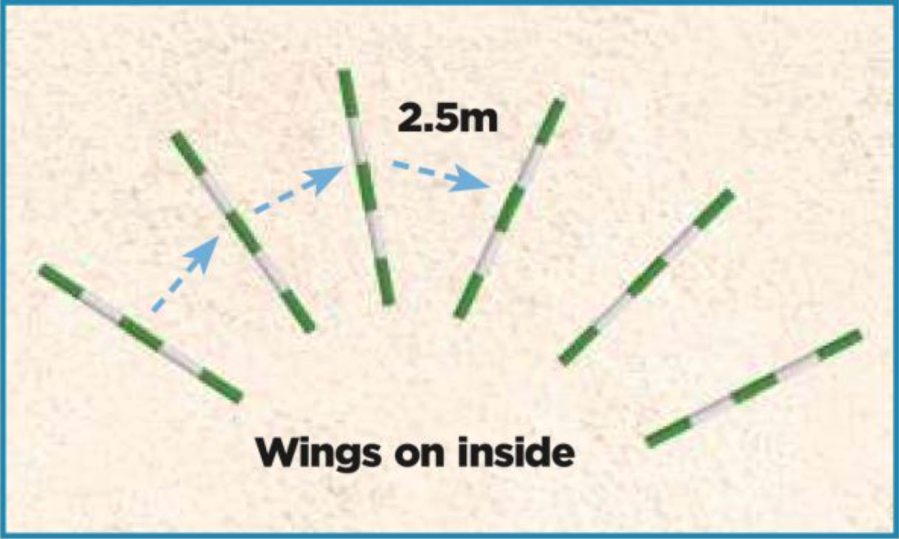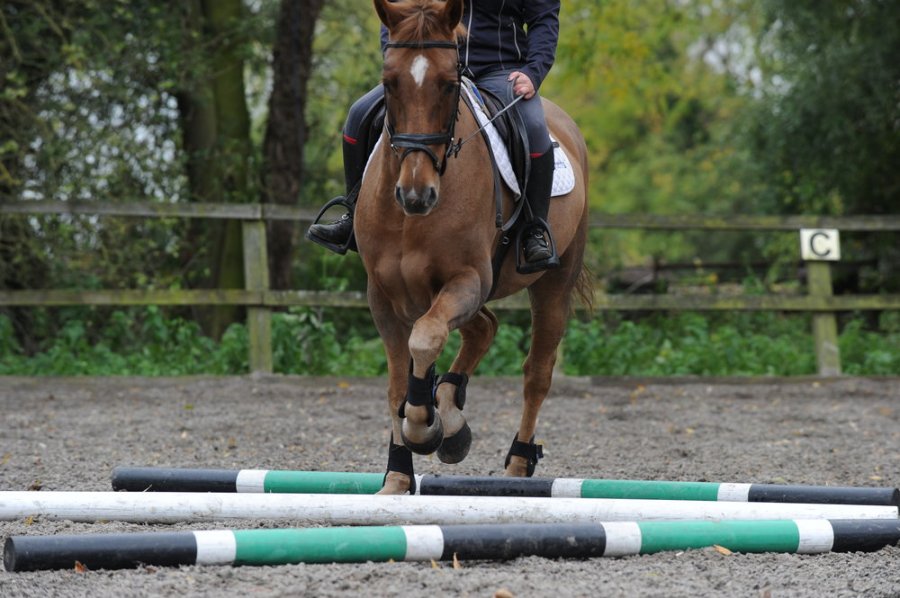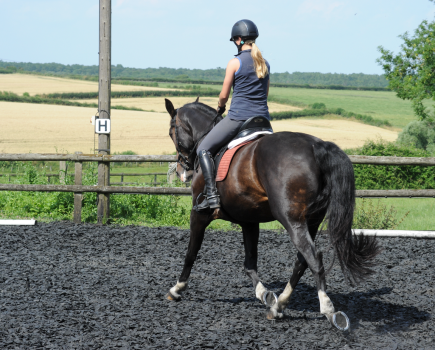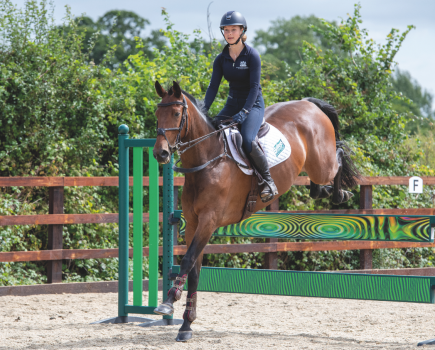When we train horses, straightness is a very important aspect, but it’s also imperative that they develop suppleness and are able to bend through their ribcage and hocks. Working over raised poles is a great way to develop strength and stability in your horse, as eventer Caroline Harris explains.
I use this exercise with all of my horses. With the young ones I start with just poles on the floor and get them to trot and canter through. If they’re real babies they’ll just trot through, and with the advanced horses you can make it tougher by raising the canter poles to get their hindleg working a bit more. The aim with all horses is to teach them to use their hindleg and bend their hocks, and to bend through their bodies, not just work in a straight line.
Set it up: Place six poles on an arc with the middle of the poles 2.5m apart (see diagram). Place a jump wing at the end of the poles in the centre of the arc for when you’re ready to raise them. I like to keep the exercise on a 20m circle, so give yourself plenty of space around the outside of the poles to circle.
Ensure that your horse is warmed up before starting any exercises and that you’ve worked evenly on both reins.
Exercise 1

Set up six poles on an arc
Time: 10 minutes
This introduces your horse to the poles. Start by trotting through them to get your horse soft and supple and bending around your inside leg.
How to ride it:
- On a 20m circle in trot, ride your horse through the arc of poles.
- Stay in rising trot to allow your horse to lift their back and use themselves.
- Aim for the middle of the poles as this will be the best distance for them to trot over.
- You want the rhythm to stay consistent so that you get regular trot steps between each pole.
- Ride through the poles several times before changing the rein and repeating the exercise in the other direction.
Exercise 2
Time: 10 minutes
Before starting this exercise, have a little warm-up canter on both reins and then do the same as you did in exercise 1, this time in canter.
How to ride it:
- Remaining on a 20m circle, focus on the canter staying in the same rhythm the whole way round. You don’t want to be riding so small a canter that when you get to the poles your horse has to really reach and stretch.
- You want to keep them together in the canter with a decent rein contact so that you’re containing the energy and creating a bit of jump and spring in the canter. This will help your horse to sit and push from behind.
- The key is to keep your horse nice and soft and bending around your inside leg. This will really help to get them bending through their ribs and engaging their hindleg.
- Ride the exercise on both reins.
Exercise 3
Time: 10 minutes
If your horse is coping well with the first two exercises, try this one. Raise the inside end of the poles, only a few inches to start with. As your horse becomes more confident, you can raise them further.
With a younger horse I would raise only a couple of poles to begin with, and then raise the rest gradually. With an older, more experienced horse, I’d raise all of the poles straight away.
Always finish on a good note. If your horse performs the exercise well twice, leave it at that so you don’t push them too hard – it’s quite physically demanding. Always reward them for their efforts, too.
How to ride it:
- In canter, ride through the poles. Keep the rhythm and the strides as regular as you can.
- Open your inside rein to ask your horse to bend around your inside leg. This will encourage them to push from the inside hock, which will help them to soften over their back.
- Once this is established, raise the poles a little more. This makes the exercise more difficult as your horse will really have to engage their hindleg, use their stomach muscles and stay soft over their back.
- Ride over the poles several times on both reins.
Meet the expert: Caroline Harris hit the senior eventing scene initially under the mentorship of Olympic medallist Sam Griffiths. She finished 2019 and 2020 in the top 30 British eventers in the world.
Receive six issues of Your Horse magazine for just £15!









